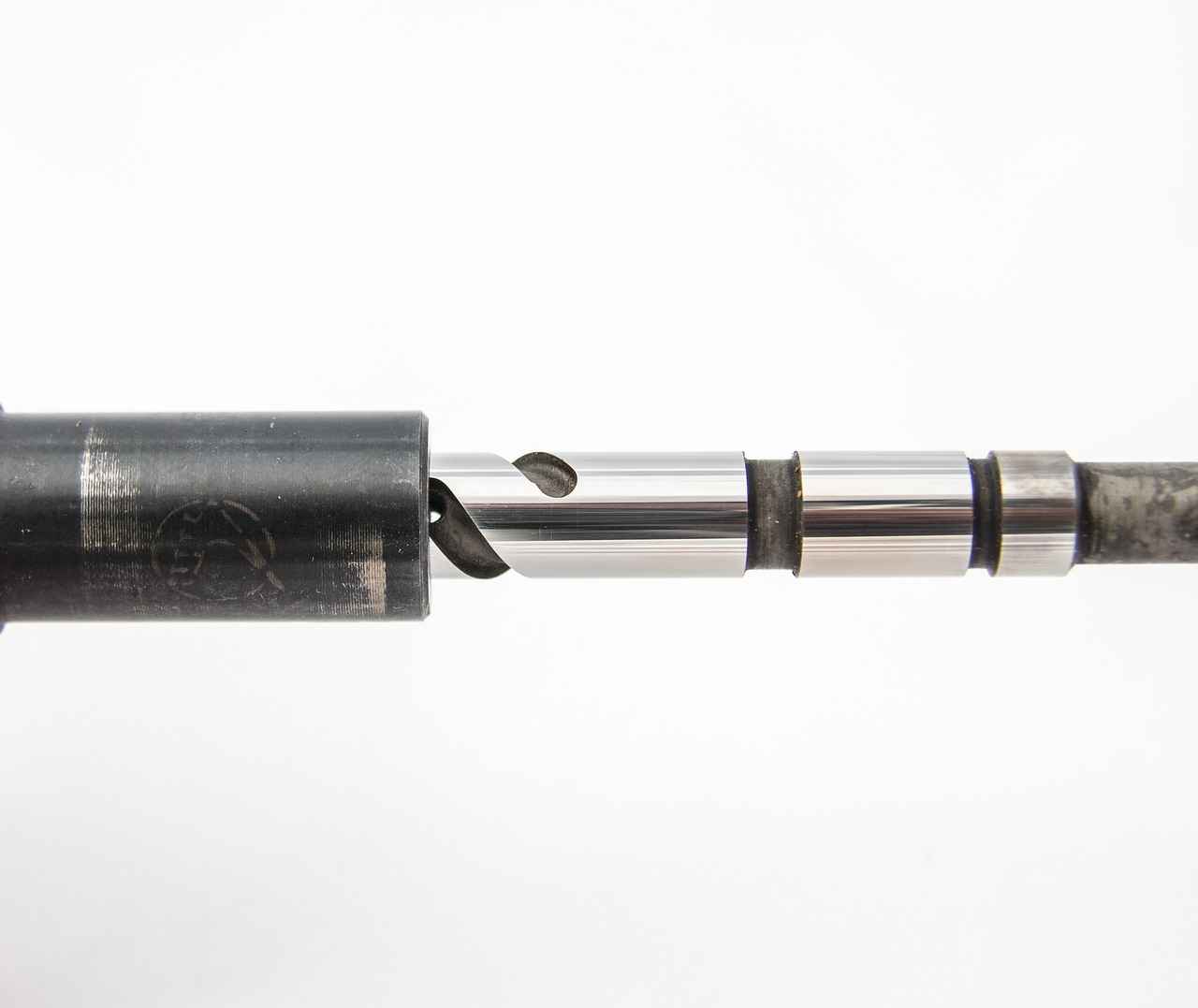This article provides detailed, step-by-step instructions on framing vinyl covers, ensuring you have all the information needed for a successful project, from materials to techniques. Framing vinyl covers can transform your cherished music memorabilia into striking wall art. Here’s how to do it right.
Understanding the essential materials is crucial for a successful framing project. Here’s a list of the tools and supplies necessary for framing vinyl covers effectively:
- Vinyl Cover: The centerpiece of your project.
- Frame: Choose one that complements your cover.
- Backing Board: Provides support and stability.
- Glass or Acrylic Sheet: Protects the vinyl from dust and damage.
- Adhesive: Acid-free glue or double-sided tape.
- Measuring Tape: For accurate measurements.
- Utility Knife: For cutting materials.
- Ruler: Ensures straight cuts and measurements.
Preparation is key to achieving a professional finish. Follow these steps:
- Clean the Vinyl: Use a soft, dry cloth to remove any dust or fingerprints.
- Measure: Determine the dimensions of your vinyl cover and the frame.
- Cut the Backing Board: Use your measurements to cut the backing board to size.
Exploring various techniques will help you choose the right method for your project. Here are some effective framing techniques:
- Floating Frame Technique: Allows the vinyl cover to “float” within the frame, giving it a modern look.
- Shadow Box Frame: Adds depth and can accommodate additional items like inserts or memorabilia.
Selecting the appropriate frame can enhance the appearance of your vinyl cover. Consider the following:
- Style: Match the frame style with the cover art.
- Color: Ensure the frame color complements the artwork.
- Material: Wood frames add warmth, while metal frames offer a sleek finish.
Different mounting options can affect the presentation of your vinyl cover. Popular techniques include:
- Direct Mounting: Attaching the vinyl directly to the backing board.
- Using Corner Mounts: Allows for easy changes and protects the vinyl.
Hanging your framed vinyl cover correctly is essential for both aesthetics and safety. Here are some tips:
- Choose the Right Location: Ensure the area is free from direct sunlight to prevent fading.
- Use Appropriate Hardware: Select wall anchors or hooks that can support the weight of the frame.
Avoiding common pitfalls can save you time and frustration. Here are frequent mistakes to watch out for:
- Using Non-Acid-Free Materials: This can lead to yellowing and damage over time.
- Incorrect Measurements: Always double-check your dimensions before cutting.
Taking precautions can protect your vinyl cover from damage. Here are some strategies:
- Handle with Care: Always hold the vinyl by the edges to avoid fingerprints.
- Use Gloves: Wearing gloves can prevent oils from your skin from transferring to the vinyl.
Recognizing poor framing techniques can help you make necessary adjustments. Look for these indicators:
- Uneven Edges: Ensure all sides of the frame are aligned.
- Loose Mounting: Check that the vinyl is securely mounted to prevent sagging.

What Materials Do You Need for Framing Vinyl Covers?
Framing vinyl covers is a rewarding project that allows you to showcase your collection in a stylish way. To achieve the best results, it is essential to have a thorough understanding of the materials and tools required for this task. Below, we outline the key components necessary for successfully framing vinyl covers.
Understanding the essential materials is crucial for a successful framing project. This section outlines the tools and supplies necessary for framing vinyl covers effectively.
- Frames: Choose a frame that complements your vinyl cover. Options include wooden, metal, or plastic frames. Ensure the frame’s size matches the dimensions of your cover.
- Mat Board: Mat boards add a professional touch and can enhance the visual appeal of your vinyl cover. Select a color that contrasts well with the cover.
- Glass or Acrylic: Protect your vinyl cover with a sheet of glass or acrylic. Acrylic is lighter and shatter-resistant, making it a safer option.
- Backing Board: A sturdy backing board provides support and keeps your vinyl cover flat. Acid-free boards are recommended to prevent damage over time.
- Adhesives: Use acid-free tape or mounting squares to secure the vinyl cover to the backing board. This prevents any potential damage from traditional adhesives.
- Tools: Essential tools include a measuring tape, utility knife, and a straight edge for precise cutting. A level is also crucial for ensuring your framed cover hangs straight.
Having the right materials is only half the battle. Understanding how to use them effectively is key to achieving a polished final product. Here are some additional insights:
- Choosing the Right Frame: Consider the style and color of your vinyl cover when selecting a frame. A well-chosen frame can significantly enhance the overall presentation.
- Cutting the Mat Board: Measure your vinyl cover and cut the mat board accordingly. A well-cut mat will create a professional look.
- Using Proper Techniques: When mounting, ensure that the vinyl cover is centered and secure. Double-check the alignment before sealing the frame.
In conclusion, gathering the right materials and tools is vital for framing vinyl covers effectively. By paying attention to the details, you can create a beautiful display that protects your vinyl while showcasing it beautifully.

How to Prepare Your Vinyl Cover for Framing?
Preparation is key to achieving a professional finish when framing vinyl covers. Proper preparation not only enhances the overall appearance but also extends the lifespan of your artwork. This section will guide you through the essential steps to clean, measure, and cut your vinyl cover effectively before framing.
Before you start the framing process, it’s crucial to clean your vinyl cover. Dust, fingerprints, or any residue can detract from its visual appeal. Use a soft, lint-free cloth along with a mild cleaning solution specifically designed for vinyl. Gently wipe the surface to remove any contaminants, ensuring that your cover looks its best once framed.
Accurate measurements are vital for a perfect fit within your chosen frame. Start by laying your vinyl cover on a flat surface. Use a ruler or measuring tape to determine its width and height. Record these measurements carefully, as even a slight error can lead to an ill-fitting frame. It’s advisable to measure at multiple points to account for any warping or irregularities in the cover.
To cut your vinyl cover, you will need the following tools:
- Sharp utility knife or a rotary cutter
- Cutting mat to protect your work surface
- Ruler for straight edges
- Safety gloves to protect your hands
Having the right tools will make the cutting process smoother and safer.
Once you have your measurements and tools ready, it’s time to cut the vinyl cover. Place the cover on the cutting mat and align it with the ruler to ensure a straight cut. Using the utility knife, apply even pressure and make a single, smooth cut along the edge. Repeat this process for each side until your vinyl cover is trimmed to the desired size. Take your time to avoid jagged edges, as these can be noticeable once framed.
Using the correct cutting technique is essential to maintain the integrity of your vinyl cover. Uneven cuts can lead to gaps in the frame, which not only looks unprofessional but can also expose the edges of your cover to potential damage. Ensuring that your cuts are clean and precise will result in a more polished final product.
After cutting, it’s advisable to inspect the edges of your vinyl cover. If you notice any rough spots, you can gently sand them down with fine-grit sandpaper to achieve a smoother finish. This step is particularly important as it will prevent any potential tearing or fraying once the cover is framed.
In summary, the preparation of your vinyl cover is a critical step in the framing process. By following these steps—cleaning, measuring, and cutting—you can ensure that your artwork is presented beautifully and safely. A well-prepared vinyl cover will not only enhance your display but also protect your investment for years to come.

What Are the Best Techniques for Framing Vinyl Covers?
Framing vinyl covers is an art that requires a blend of creativity and technical skills. Understanding the best techniques for framing can significantly enhance the visual appeal of your collection. This section explores various methods that can help you achieve a professional finish while ensuring the longevity of your vinyl covers.
When it comes to framing vinyl covers, several techniques can be employed to ensure that your artwork is displayed beautifully and securely. Here are some of the most effective methods:
- Floating Frame Technique: This method allows the vinyl cover to appear as if it’s suspended within the frame, creating a modern and stylish look. To achieve this, use a frame with a deeper profile. Ensure that your vinyl cover is mounted on a backing board, leaving a small gap between the cover and the frame edges.
- Shadow Box Framing: A shadow box is perfect for adding depth to your display. This technique is ideal for vinyl covers with additional memorabilia, such as concert tickets or photos. The frame is deeper, allowing for layers and creating a three-dimensional effect.
- Standard Framing: For a classic approach, standard framing with a mat board can be effective. Choose a mat color that complements your vinyl cover, and ensure that the mat is acid-free to prevent damage. This technique is straightforward and widely used for various types of artwork.
- Direct Mounting: If you’re looking for a sleek and contemporary look, consider direct mounting. This involves adhering the vinyl cover directly to a rigid backing board using archival-safe adhesives. This method is ideal for covers that are not prone to warping or bending.
Selecting the right frame is critical in enhancing the aesthetic appeal of your vinyl cover. Consider the following:
- Material: Frames come in various materials like wood, metal, or plastic. Choose a material that complements the style of the cover and your personal taste.
- Color: The frame color should either contrast or complement the colors in your vinyl cover. Neutral colors often work well, but don’t hesitate to experiment with bolder choices.
- Size: Ensure the frame size matches the dimensions of your vinyl cover. A well-fitted frame enhances the overall presentation.
Different mounting techniques can affect how your vinyl cover is displayed. Here are a few popular options:
- Hinging: This method involves attaching the cover with hinges made from acid-free materials, allowing it to be easily removed if necessary.
- Corner Mounts: These are small adhesive corners that hold the vinyl cover in place without damaging it, ensuring that it remains intact.
- Full Adhesive Mounting: While this method provides a secure hold, it is essential to use acid-free adhesives to prevent damage to the cover.
By exploring these techniques and options, you can choose the best method for framing your vinyl covers, ensuring they are not only protected but also beautifully displayed. Understanding the nuances of each technique will help you achieve a look that resonates with your style and enhances your collection.
How to Choose the Right Frame for Your Vinyl Cover?
When it comes to enhancing the visual appeal of your vinyl cover, selecting the right frame is crucial. A well-chosen frame not only complements the artwork but also protects it from damage. Here are some essential factors to consider when making your selection.- Style of the Frame: Consider the overall aesthetic of your vinyl cover. A modern cover may look best in a sleek, minimalist frame, while a vintage cover might benefit from a more ornate design. Ensure the frame style aligns with the artwork to create a cohesive look.
- Material of the Frame: Frames come in various materials, including wood, metal, and plastic. Wooden frames add warmth and a classic touch, while metal frames offer a contemporary feel. Choose a material that not only matches the style of your vinyl cover but also fits the environment where it will be displayed.
- Color of the Frame: The color of the frame can significantly impact how your vinyl cover is perceived. Neutral colors like black, white, or natural wood often work well, as they don’t distract from the artwork. However, a bold color can make a statement and draw attention to the cover.
- Size of the Frame: Ensure that the frame is appropriately sized for your vinyl cover. A frame that is too large or too small can detract from the overall presentation. Measure your vinyl cover carefully and choose a frame that provides a snug fit.
- Glass or Acrylic Protection: Protecting your vinyl cover from dust and UV light is essential for longevity. Frames with glass or acrylic fronts can shield your artwork from harmful elements. Consider using UV-protective glass for added protection, especially if your vinyl cover will be displayed in bright light.
- Matting Options: Adding a mat can enhance the look of your vinyl cover by providing a visual separation between the artwork and the frame. Mats come in various colors and textures, allowing you to customize the presentation further. A mat can also help to prevent the vinyl from touching the glass, reducing the risk of damage.
When selecting a frame for your vinyl cover, it’s essential to balance aesthetics with functionality. Take the time to explore different styles, materials, and colors to find the perfect match for your artwork. Engaging with local frame shops can also provide valuable insights and options that may not be available online. Remember, the right frame not only enhances the beauty of your vinyl cover but also ensures its protection for years to come.
What Mounting Options Are Available for Vinyl Covers?
When it comes to displaying your vinyl covers, the choice of mounting options plays a crucial role in enhancing their visual appeal. Different techniques not only affect the overall presentation but also influence the longevity and protection of your covers. In this section, we will explore some of the most popular mounting techniques and their respective benefits.
- Direct Mounting: This technique involves adhering the vinyl cover directly onto a backing board. It provides a sleek and modern look while eliminating the need for a frame. Direct mounting is ideal for those who want a minimalist approach, allowing the artwork to take center stage.
- Floating Mount: A floating mount creates an illusion of depth by suspending the vinyl cover between two panes of glass or acrylic. This method adds a touch of elegance and sophistication, making it perfect for showcasing collectible items. The floating effect also helps protect the cover from dust and damage.
- Mat Board Mounting: Using a mat board can enhance the aesthetics of your vinyl cover. This technique involves placing the cover on a mat board, which is then framed. The mat board serves as a border, drawing attention to the cover and creating a layered effect. This option is particularly beneficial for larger covers, as it provides a visual break and emphasizes the artwork.
- Shadow Box Mounting: For three-dimensional displays, shadow box mounting is an excellent choice. This technique allows for the inclusion of additional elements, such as memorabilia or related items, alongside the vinyl cover. The depth of the shadow box adds an intriguing dimension, making it a popular choice for collectors.
- Canvas Wrap: A canvas wrap involves printing the vinyl cover onto canvas material and stretching it over a wooden frame. This method offers a gallery-style presentation that is both durable and visually appealing. Canvas wraps are perfect for those looking to create a more artistic display.
Each of these mounting options has its own unique advantages, allowing you to choose the method that best fits your style and the specific vinyl cover you wish to display. Consider factors such as the size, design, and intended location of your artwork when making your selection. Additionally, think about how each option can enhance the overall aesthetic of your space.
In summary, selecting the right mounting technique for your vinyl covers is essential for achieving the desired presentation and protection. Whether you prefer a modern direct mount or an elegant floating mount, understanding the options available ensures that your vinyl covers are showcased beautifully and securely.

How to Hang Your Framed Vinyl Cover Properly?
Hanging your framed vinyl cover correctly is essential for both aesthetics and safety. Properly displayed artwork not only enhances the visual appeal of your space but also ensures that your prized collection remains secure. In this section, we will explore effective methods and tips for hanging your artwork, ensuring it looks stunning while minimizing risks.
When you hang your vinyl cover correctly, you prevent potential damage and ensure that it remains in excellent condition for years to come. Additionally, a well-hung piece can serve as a focal point in your room, drawing attention and admiration from guests.
To hang your framed vinyl cover effectively, you will need the following tools:
- Measuring tape – To ensure accurate placement on the wall.
- Pencil – For marking the wall where you will place your nails or hooks.
- Level – To ensure your artwork hangs straight.
- Hammer or drill – Depending on the type of wall and hanging hardware.
- Hanging hardware – Such as D-rings, picture hooks, or wall anchors.
Selecting the perfect location for your artwork is crucial. Consider the following:
- Lighting: Ensure the area is well-lit to showcase your vinyl cover without causing glare.
- Height: Hang your artwork at eye level, typically 57-60 inches from the floor.
- Surroundings: Consider the decor and color scheme of the room to create a harmonious look.
Follow these steps for a successful hanging process:
1. Measure the desired height on the wall.2. Mark the spot with a pencil.3. Use a level to ensure the mark is straight.4. Install the hanging hardware according to the manufacturer's instructions.5. Carefully hang the vinyl cover on the hardware.6. Step back and adjust as necessary to ensure it is level.
To keep your artwork level, always use a level tool after hanging. If it appears crooked, gently adjust it until it is straight. You may also use small felt pads on the bottom corners of the frame to help stabilize it and prevent it from tilting.
To ensure your vinyl cover is hung correctly, avoid these common mistakes:
- Ignoring wall type: Different wall materials require specific hanging methods. Ensure you use appropriate anchors for drywall, brick, or plaster.
- Hanging too high or low: As mentioned, aim for eye level to create an inviting atmosphere.
- Overloading hardware: Always check the weight limits of your hanging hardware to prevent accidents.
By following these guidelines, you can ensure that your framed vinyl cover is not only a stunning addition to your decor but also securely displayed. Remember, the right tools and techniques make all the difference in achieving a polished and professional look.
What Tools Do You Need for Hanging Vinyl Covers?
Hanging your framed vinyl covers can be a rewarding experience, but it requires the right tools to ensure the process is smooth and secure. In this section, we will explore the essential tools you need to effectively hang your artwork, making the process easier and more efficient.
To achieve a professional look when hanging your vinyl covers, consider the following tools:
- Measuring Tape: Accurate measurements are crucial. A measuring tape helps you determine the exact placement of your artwork on the wall.
- Pencil: Use a pencil to mark where you want to position your frame. This allows for adjustments before making any permanent changes.
- Level: A level ensures that your artwork hangs straight. This tool is essential for achieving a professional finish.
- Hammer: A hammer is necessary for driving nails or picture hooks into the wall securely.
- Picture Hooks or Nails: Choose appropriate hooks or nails based on the weight of your framed vinyl cover. This ensures stability and prevents damage to your walls.
- Drill (optional): For heavier frames, a drill may be necessary to install wall anchors or screws for added support.
- Stud Finder: A stud finder helps locate wall studs, providing a more secure anchor point for heavier frames.
Using the right tools is just the beginning. Here are some tips to enhance your hanging process:
1. Always measure twice and mark your spots clearly.2. When using a level, check both horizontally and vertically for accuracy.3. For heavier frames, ensure that you are anchoring into a stud or using appropriate wall anchors.4. If using multiple frames, consider a layout on the floor before transferring it to the wall.
While hanging your vinyl covers, safety should be a priority. Here are some considerations:
- Wear Safety Glasses: If using a drill or hammer, protect your eyes from debris.
- Secure Your Ladder: If you’re working at heights, ensure your ladder is stable and positioned safely.
Using the right tools can significantly simplify the process of hanging your framed vinyl covers. With proper measurements, secure anchoring, and attention to detail, you can create a stunning display that enhances your space. Remember to take your time, follow these tips, and enjoy the process of showcasing your art!
How to Ensure Your Framed Vinyl Cover Stays Level?
When it comes to displaying your favorite vinyl covers, ensuring that they hang straight is essential for a polished look. A level artwork not only enhances the visual appeal but also demonstrates a level of care and attention to detail that any art lover appreciates. In this section, we will explore effective techniques to guarantee that your framed vinyl cover remains perfectly level.
Keeping your artwork level is crucial for several reasons. Firstly, it maintains a professional appearance, which can significantly enhance the overall aesthetic of your space. Secondly, a level frame prevents any distortion of the artwork, allowing the viewer to appreciate its details fully. Lastly, it contributes to the longevity of the frame and the artwork itself, as uneven hanging can lead to unnecessary stress on the frame.
- Level Tool: A simple bubble level can be your best friend in this process. It provides a quick and accurate way to check if your frame is straight.
- Measuring Tape: Use this to measure the height from the floor to the bottom of the frame to ensure consistent placement.
- Pencil: Marking the wall lightly will help you align your frame before making any permanent adjustments.
- Wall Anchors: If you’re hanging heavier frames, wall anchors can provide additional support and stability.
To ensure your framed vinyl cover hangs straight, follow these steps:
- Choose the Right Location: Before hanging, decide on the best wall space for your vinyl cover. Consider lighting and surrounding decor.
- Measure and Mark: Use a measuring tape to determine where the top of the frame will sit. Mark this point on the wall with a pencil.
- Install Hanging Hardware: Attach the appropriate hanging hardware to the back of your frame. Ensure it is secure and can support the weight of the frame.
- Use a Level: As you hang the frame, use your level tool to check for straightness. Adjust as necessary until it is perfectly aligned.
Many people make mistakes that can lead to crooked frames. Here are some common pitfalls to avoid:
- Skipping the Level Check: Always check your work with a level tool before finalizing the hang.
- Improper Hardware: Using inadequate hanging hardware can lead to slippage or even damage to your artwork.
- Neglecting Wall Surface: Ensure that the wall surface is clean and free from dust or debris, as this can affect the adhesive properties of wall anchors.
By following these techniques and avoiding common mistakes, you can ensure that your framed vinyl cover not only hangs straight but also enhances the overall aesthetic of your space. Remember, a well-displayed piece of art can serve as a conversation starter and a focal point in any room.

What Common Mistakes to Avoid When Framing Vinyl Covers?
When it comes to framing vinyl covers, avoiding common pitfalls can save you both time and frustration. Many enthusiasts and beginners alike often make mistakes that can lead to unsatisfactory results or even damage to the artwork. This section highlights frequent mistakes made during the framing process and provides tips on how to prevent them.
One of the most common errors in framing vinyl covers is inaccurate measurement. Incorrect dimensions can lead to ill-fitting frames, which not only diminishes the aesthetic appeal but can also cause damage to the cover itself. Always use a reliable measuring tape and double-check your measurements before cutting any materials.
Using the wrong materials can severely impact the longevity of your framed vinyl cover. For instance, non-archival materials can cause discoloration or deterioration over time. It’s crucial to select materials that are acid-free and designed for preservation. Additionally, avoid using adhesives that can leave residues or damage the surface of the vinyl.
Alignment is key to achieving a professional look. Many people overlook this step, leading to crooked displays. To prevent this, use a level during the framing process. Utilizing spacers can also help maintain even spacing between the vinyl cover and the frame, ensuring a clean and polished appearance.
The frame you choose can significantly affect the overall presentation of your vinyl cover. A common mistake is selecting a frame that is either too bulky or too delicate for the artwork. Consider the style and size of the vinyl cover when making your choice. A well-suited frame enhances the visual impact, while an ill-fitting one can detract from it.
Taking precautions can protect your vinyl cover from damage. Avoid using sharp tools that could scratch the surface, and always handle the cover by the edges. Additionally, consider using a protective backing to prevent any potential abrasions during the framing process.
Recognizing poor framing techniques can help you make necessary adjustments. Common indicators include warping, uneven edges, or visible adhesive marks. If you notice any of these signs, it may be time to reevaluate your framing methods and make corrections to ensure your vinyl cover is displayed beautifully.
Once your vinyl cover is framed, it’s essential to maintain it properly. Avoid placing it in direct sunlight, as this can fade the colors over time. Regularly check for dust buildup and clean the glass carefully to keep the artwork looking its best. Humidity control is also vital, as excessive moisture can lead to mold or mildew.
By being aware of these common mistakes and taking proactive measures, you can ensure that your framing project is successful and that your vinyl covers are preserved beautifully for years to come.
How to Prevent Damage to Your Vinyl Cover During Framing?
Framing your vinyl cover is an exciting way to showcase your collection, but it’s essential to take the necessary precautions to prevent any damage. Here are some effective strategies to safeguard your artwork while framing:
- Clean Your Hands: Before handling your vinyl cover, ensure your hands are clean and dry. Oils and dirt from your fingers can leave marks or smudges on the surface.
- Use Acid-Free Materials: When selecting mats and adhesives, opt for acid-free options. This choice is crucial as acid can cause yellowing and deterioration over time.
- Handle with Care: Always hold the edges of the vinyl cover to avoid bending or creasing the artwork. If possible, use cotton gloves to minimize direct contact.
- Store Properly: If you’re not framing immediately, store your vinyl cover flat in a protective sleeve. Avoid folding or rolling it, as this can lead to permanent creases.
- Choose the Right Frame: Ensure that your frame is the appropriate size and provides enough support. A frame that’s too tight can warp the vinyl, while one that’s too loose may allow it to shift.
- Avoid Direct Sunlight: When displaying your framed vinyl cover, keep it out of direct sunlight. UV rays can cause fading and long-term damage to the colors and artwork.
- Consider Glass or Acrylic: Using UV-protective glass or acrylic can help shield your vinyl cover from harmful light exposure and dust accumulation.
- Secure Mounting: Ensure that your vinyl cover is securely mounted within the frame. Use corner mounts or clips that won’t damage the edges of the cover.
Implementing these strategies can significantly reduce the risk of damage to your vinyl cover during the framing process. By taking the time to prepare and choose the right materials, you’re not only preserving your artwork but also enhancing its visual appeal. Remember, the goal is to maintain the integrity of your vinyl cover while showcasing it beautifully.
In addition, regularly check your framed vinyl cover for any signs of wear or damage. If you notice any issues, consider re-framing or adjusting your display to ensure it remains in top condition. With the right precautions and care, your vinyl cover can be a stunning centerpiece in your home for years to come.
What Are the Signs of Poor Framing Techniques?
Framing vinyl covers can be a rewarding endeavor, but it’s essential to recognize the signs of poor framing techniques to ensure your project is successful. Understanding these indicators not only helps you identify mistakes but also allows you to make necessary adjustments that enhance the overall presentation of your artwork. Below, we explore the common signs of inadequate framing and provide practical solutions to address them.
- Uneven Edges: If the edges of your vinyl cover are not aligned properly within the frame, it can create a visually unappealing look. This often occurs due to inaccurate measurements or improper cutting.
- Bubbles or Wrinkles: Presence of bubbles or wrinkles in the vinyl cover is a clear sign of poor mounting technique. This can detract from the overall aesthetic and may require re-mounting.
- Visible Dust or Debris: If dust or debris is visible between the glass and the vinyl, it indicates that the framing process was not executed with care. This can be avoided by ensuring a clean working environment.
- Inconsistent Spacing: Inconsistent spacing between the vinyl cover and the frame can lead to an awkward appearance. Proper measuring and centering techniques are crucial to avoid this issue.
- Frame Damage: Scratches, dents, or other damages to the frame itself are signs of poor handling or inadequate materials. Using high-quality frames can mitigate this risk.
Identifying the signs of poor framing is just the first step. Here are some effective strategies to address these issues:
- Re-measure and Re-cut: If you notice uneven edges, take the time to re-measure and re-cut your vinyl cover. Precision is key to achieving a professional finish.
- Use Proper Mounting Techniques: To avoid bubbles or wrinkles, consider using a mounting adhesive specifically designed for vinyl. Apply it evenly and avoid stretching the material.
- Clean Thoroughly: Before framing, ensure both the vinyl cover and the glass are free of dust and debris. A microfiber cloth can be effective for this purpose.
- Check Alignment: Consistently check for alignment during the framing process. Use a level to ensure that the vinyl cover is centered and straight within the frame.
- Invest in Quality Materials: Choose frames made from durable materials that can withstand wear and tear. This not only enhances the appearance but also protects your artwork.
Proper framing techniques are essential not only for aesthetic reasons but also for the longevity of your vinyl covers. A well-framed piece can significantly enhance the visual appeal of your artwork, making it more enjoyable to view and display. Furthermore, inadequate framing can lead to damage over time, such as fading, warping, or deterioration of the vinyl material.
By recognizing the signs of poor framing and taking proactive steps to correct them, you can ensure that your vinyl covers are presented beautifully and preserved for years to come. Remember, attention to detail is crucial in framing, so take your time and apply the techniques discussed here for the best results.
Frequently Asked Questions
- What materials do I need to frame my vinyl cover?
To frame your vinyl cover, you’ll need a suitable frame, mounting board, acid-free tape, a ruler, scissors, and possibly a utility knife. Having these materials on hand will streamline your project and ensure a polished finish.
- How do I prepare my vinyl cover before framing?
Preparation is crucial! Start by cleaning your vinyl cover gently with a soft cloth. Then, measure it accurately and cut it to the desired size. This ensures that it fits perfectly within the frame and looks professional.
- What are the best techniques for framing vinyl covers?
There are several effective techniques for framing vinyl covers, including using matting for added depth or opting for a simple frame that highlights the cover art. Choose a technique that complements your cover and personal style!
- How can I ensure my framed vinyl cover stays level when hanging?
To keep your framed vinyl cover level, use a level tool when hanging it. You can also mark the wall lightly with a pencil to guide you. This will help avoid that dreaded crooked look!
- What common mistakes should I avoid when framing?
Common mistakes include using the wrong frame size, neglecting to protect the vinyl from moisture, and not measuring accurately. Avoid these pitfalls to save time and frustration in your framing project.




